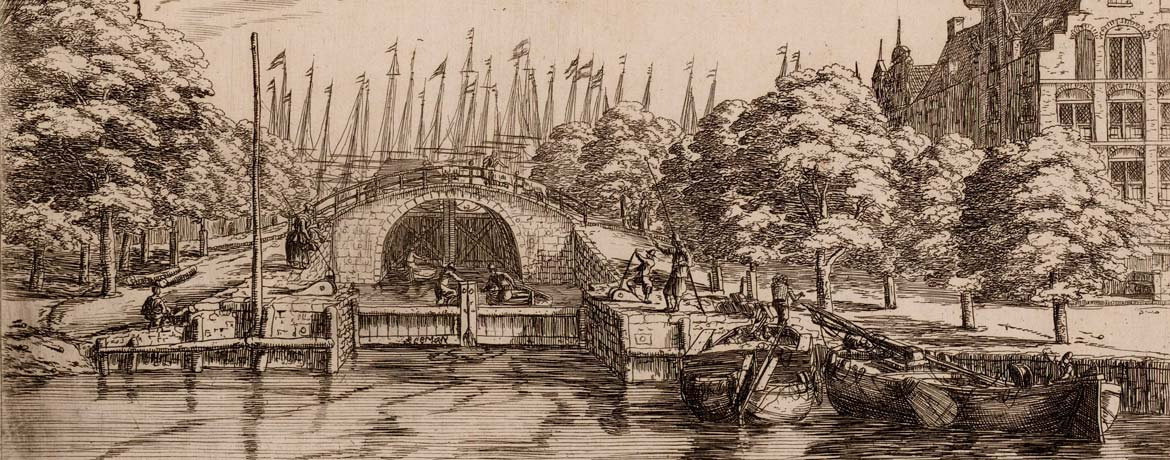Beer, but no bricks
Koen KleijnThe beer industry struggled with the fact that Amsterdam did not have clean water. The canals were open sewers in which heavily polluting leather and textile factories dumped their waste. Special barges from the River Vecht supplied the breweries with clean water.
The Brouwersgracht was dug out in 1585 to create a connection between the new canals, and was extended to the Lijnbaansgracht in 1613. Several breweries were located at the start of the Singel, including the ‘Klaverblad’ at Singel 16, which was mentioned as early as 1592, and which would explain the name of the canal.
The new Brouwersgracht became an important route the new city. For the construction of the new city, everything from the sand to building piles, bricks, beams, wooden boards, roof tiles, stone blocks for facades, pavements and bridges had to be supplied from somewhere else. Everything was transported over the water by barges, which all had to pass through one lock, the Haarlemmersluis, at the start of the Singel. It is there that the vegetable and fruit barges that served the city’s markets passed, as well as the ferry services, the milk barrels from Waterland, and the fresh water boats that served the breweries.
"When the Haarlemmersluis partially collapsed in 1617 all of that traffic came to a halt"
When the Haarlemmersluis partially collapsed in 1617 and needed be renewed, all of that traffic came to a halt. The bargemen forced the city to build a second lock, the Eenhoornsluis in the continuation of the Prinsengracht, in 1619. As a result of the construction of this lock, the western part of the Brouwersgracht now also had direct access to the IJ River and became an important location for freight storage; the long row of warehouses on the canal still testify to that today.
The construction of the new lock was not planned, and is another testament to the fact that Amsterdam’s urban expansion was primarily a process of pragmatic solutions, not the execution of a ‘master plan’.
Photo: Reinier Nooms, The Eenhoorn Lock, c. 1659 (Collection Amsterdam City Archives)
This story origins in Edition #7 for which art historian Koen Kleijn went in search of ten remarkable city stories viewed from the theme 'The Medium is the Message'.

Koen Kleijn
Koen Kleijn is art historian, journalist, documentary filmmaker and writer. One of his specialties is the history of Amsterdam, on which he wrote several books. Since early 2018, he has been editor-in-chief of the historical monthly Ons Amsterdam. He is also regularly writes reviews for De Groene Amsterdammer, and is curator of Museum Het Grachtenhuis.
